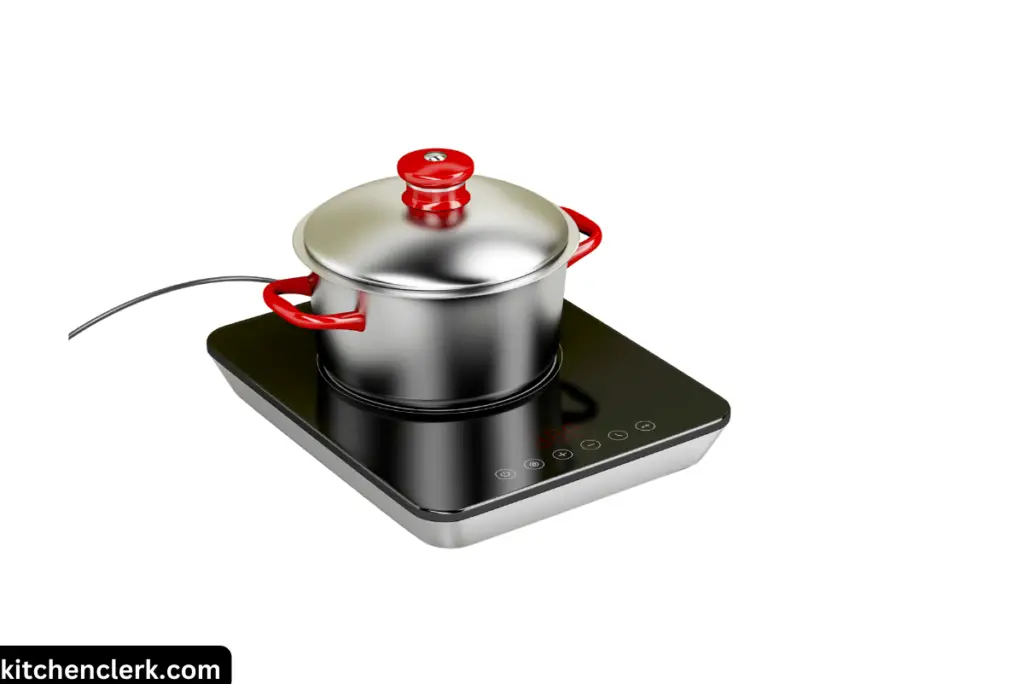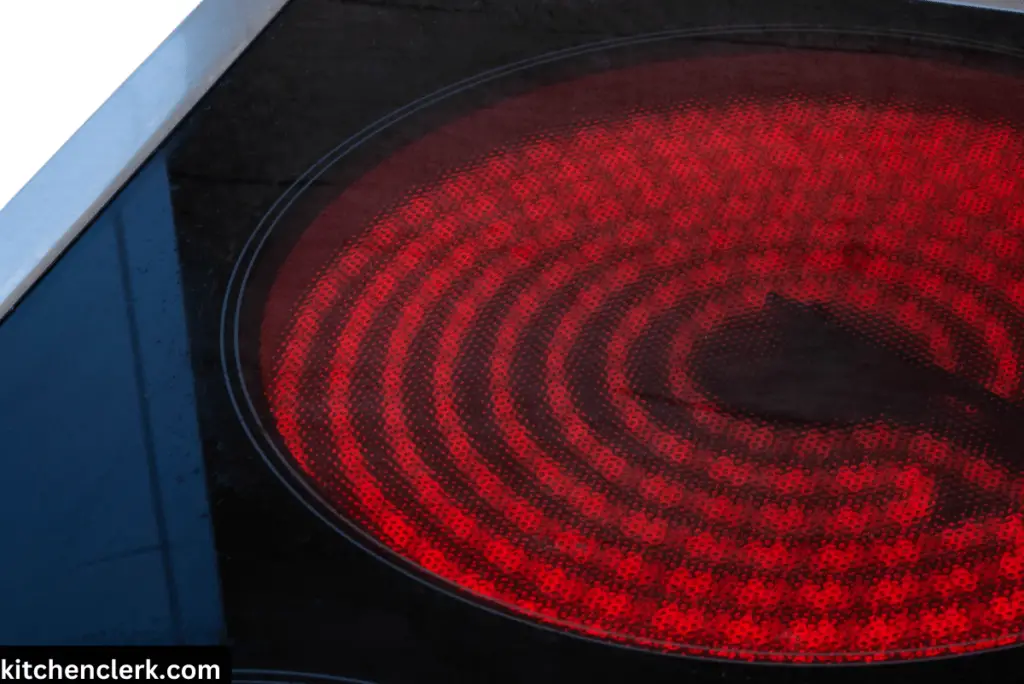I have seen countless debates over the best cooking appliances for different kitchen setups. One common discussion revolves around hot plates and ceramic cookers.
These two options are often chosen as alternatives to traditional stovetops, especially in small kitchens or temporary cooking spaces.
In this article, I will delve into the pros and cons of hot plates and ceramic cookers, helping you decide which one is right for your kitchen.
What are Hot Plates?

Hot plates are compact countertop cooking appliances that use electric heating elements to generate heat for cooking.
They are portable and can be easily moved around the kitchen or used outdoors. Hot plates typically have one or two heating elements, allowing you to cook multiple dishes simultaneously.
The Benefits of Hot Plates
- Portability: Hot plates are incredibly portable, making them an excellent choice for small kitchens, dorm rooms, or RVs. You can easily store them when not in use or take them with you on camping trips.
- Affordability: Hot plates are generally more affordable compared to ceramic cookers and traditional stovetops. If you’re on a budget or need a temporary cooking solution, a hot plate is a cost-effective option.
- Flexibility: Hot plates come with different types of heating elements, such as coil burners or infrared elements. This variety allows you to choose the one that best suits your cooking needs.
- Ease of use: Hot plates are incredibly easy to use. Simply plug them into a power source, adjust the temperature settings, and start cooking. They often come with heat control knobs that allow you to adjust the temperature to your desired level.
Drawbacks of Hot Plates
- Limited cooking surface: Hot plates typically have a smaller surface area compared to traditional stovetops or ceramic cookers. This limitation can make it challenging to cook multiple dishes simultaneously or use larger cookware.
- Uneven heat distribution: In some cases, hot plates may have inconsistent heat distribution, leading to uneven cooking. This issue can be mitigated by ensuring the cookware you use is compatible with the hot plate and distributing heat evenly.
- Slower cooking time: Hot plates may take longer to heat up and cook food compared to gas or induction stovetops. If you’re accustomed to fast cooking, you may need to adjust your expectations when using a hot plate.
What are Ceramic Cookers?

Ceramic cookers, also known as ceramic hobs or cooktops, are electric cooking appliances with smooth, glass-ceramic surfaces. Underneath the surface, there are heating elements that provide heat for cooking. Ceramic cookers come in various sizes, ranging from small portable units to full-sized stovetop replacements.
The Advantages of Ceramic Cookers
- Sleek and modern design: Ceramic cookers add a touch of elegance to any kitchen with their smooth and glossy surface. They are available in different colors and finishes, allowing you to choose one that complements your kitchen decor.
- Easy to clean: The smooth surface of ceramic cookers makes them easy to clean. Unlike traditional stovetops, there are no crevices or grates where food can get trapped. A simple wipe-down with a damp cloth is often sufficient to remove spills and stains.
- Energy-efficient: Ceramic cookers are known for their energy efficiency. The glass-ceramic surface heats up quickly and retains heat well, allowing for more efficient cooking. Additionally, the heat distribution on ceramic cookers is usually more even compared to hot plates.
- Precise temperature control: Ceramic cookers often come with precise temperature control settings, allowing you to adjust the heat according to your cooking requirements. This feature is especially useful when you need to simmer delicate sauces or melt chocolate at low temperatures.
Limitations of Ceramic Cookers
- Cost: Ceramic cookers are generally more expensive than hot plates, making them a bigger investment for your kitchen. However, they are considered a long-term investment due to their durability and energy efficiency.
- Installation: Ceramic cookers usually require professional installation, especially if you’re replacing a traditional stovetop. This additional step may add to the overall cost and inconvenience of installing a ceramic cooker.
- Fragility: The glass-ceramic surface of ceramic cookers can be delicate and prone to cracking if heavy or sharp objects are dropped on it. It’s important to handle cookware with care and avoid sliding or dragging them across the surface.
Differences between Hot Plates and Ceramic Cookers
While hot plates and ceramic cookers may serve the same purpose of providing a cooking surface, there are several key differences between the two. Understanding these differences can help you make an informed decision based on your specific needs and preferences. Let’s explore the dissimilarities between hot plates and ceramic cookers:
1. Heating technology
Hot plates use electric heating elements, typically coil burners or infrared elements, to generate heat. These heating elements directly contact the cookware, transferring heat through conduction. On the other hand, ceramic cookers utilize radiant heat from beneath a smooth glass-ceramic surface.
This heat is transferred to the cookware through infrared radiation. The heating technology employed by each appliance can affect the speed and efficiency of cooking.
2. Heating speed and control
Hot plates typically reach their maximum heat output more quickly compared to ceramic cookers. The direct contact between the heating elements and the cookware allows for faster heat transfer. This can be advantageous when you need to sear meats or bring liquids to a boil rapidly.
Ceramic cookers, on the other hand, may take longer to heat up due to the radiant heat transfer process. However, once they reach the desired temperature, they tend to provide more consistent and precise heat control. Many ceramic cookers come with specific temperature settings, allowing for greater control over cooking temperatures.
3. Cooking surface and cookware compatibility
Hot plates often feature individual coil burners, which means you can cook multiple dishes simultaneously. However, the limited surface area of hot plates can be a challenge when it comes to using larger cookware or accommodating multiple pots and pans at once.
Ceramic cookers, on the other hand, offer a larger and smoother cooking surface. This provides more room for larger cookware and makes it easier to maneuver pots and pans during cooking. However, it’s important to note that using the wrong type of cookware on a ceramic cooker can result in damage to the surface or inefficient heat transfer.
It’s best to use cookware specifically designed for use on ceramic cookers to ensure optimal performance and longevity.
4. Design and aesthetics
Hot plates are typically compact and portable, making them suitable for small kitchens, dorm rooms, or outdoor cooking. They are practical solutions that can be easily stored when not in use. However, hot plates may not offer the same aesthetic appeal as ceramic cookers, as they are often designed with a simple, practical look.
Ceramic cookers, with their sleek glass-ceramic surface, add a touch of modern elegance to any kitchen. They come in various colors and finishes, allowing you to choose a style that matches your kitchen decor.
5. Installation and cost
Hot plates require no installation and can be used straight out of the box, making them a convenient option for those who need a temporary or portable cooking solution. They are generally more affordable compared to ceramic cookers.
Ceramic cookers, on the other hand, often require professional installation, especially if they are replacing a traditional stovetop. This additional installation cost should be taken into account when considering the overall investment. However, due to their durability and energy efficiency, ceramic cookers are considered a long-term investment that can add value to your kitchen.
Choosing the Right Option for Your Kitchen
When it comes to choosing between hot plates and ceramic cookers, it all boils down to your specific cooking needs, space availability, and budget. If you’re looking for a portable, affordable solution or need an extra cooking surface for occasional use, a hot plate may be the way to go.
On the other hand, if you value sleek design, energy efficiency, and precise temperature control, a ceramic cooker might be the better choice.
Consider the limitations of each option and assess how well they align with your cooking habits and kitchen layout. Whether you opt for a hot plate or a ceramic cooker, both options can offer convenience and versatility in your kitchen.
